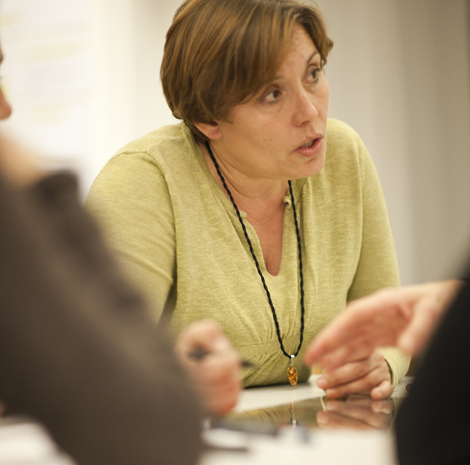 Romy Otiz, dreamhamar’s community activator in the Environment week, directed the first workshop. She introduced the concept of urban farming; an activity for many people: Both for those who are environmentally conscious, those who find it expensive to buy food at the store, the ones who miss a garden, and those who want to spend time with family and cultivating life’s green delights . We know for example that children who have a close relationship to nature, will also be more likely to use nature as adults.
Romy Otiz, dreamhamar’s community activator in the Environment week, directed the first workshop. She introduced the concept of urban farming; an activity for many people: Both for those who are environmentally conscious, those who find it expensive to buy food at the store, the ones who miss a garden, and those who want to spend time with family and cultivating life’s green delights . We know for example that children who have a close relationship to nature, will also be more likely to use nature as adults.
How about a greenhouse cafe? Couldn’t it be nice to enjoy an piece of apple cake that has been cultivated next to your chair? A warm, comfortable place with plants and trees. Greenhouse Cafe is transparent during winter time, but that can be opened up in the summer.
Jenny Pfau, our creativ guest from Hamburg, talked during the workshop and lecture about the philosophy under Cradle-to-cradle design. We, at ecosistema urbano, know cradle to cradle approach thanks to the book writen by Michael Braungart and William McDonught titled “Cradle-to-cradle”. The real difference comes when you read the subtitle “Remaking the Way We Make Things”.This book, published in 2002, is an effective manifesto for cradle to cradle design that gives specific details of how to achieve the model. We can find an introduction to it at wikipedia:
In the cradle-to-cradle model, all materials used in industrial or commercial processes—such as metals, fibers, dyes—are seen to fall into one of two categories: “technical” or “biological” nutrients. Technical nutrients are strictly limited to non-toxic, non-harmful synthetic materials that have no negative effects on the natural environment; they can be used in continuous cycles as the same product without losing their integrity or quality. In this manner these materials can be used over and over again instead of being “downcycled” into lesser products, ultimately becoming waste. Biological Nutrients are organic materials that, once used, can be disposed of in any natural environment and decompose into the soil, providing food for small life forms without affecting the natural environment. Cradle to cradle has also been the subject matter of many documentary films, including the one that we were lucky to see at the Basar Building during the environment workshop Waste=Food.
She also shared with us an online lecture given by William McDonught which you may watch here:


